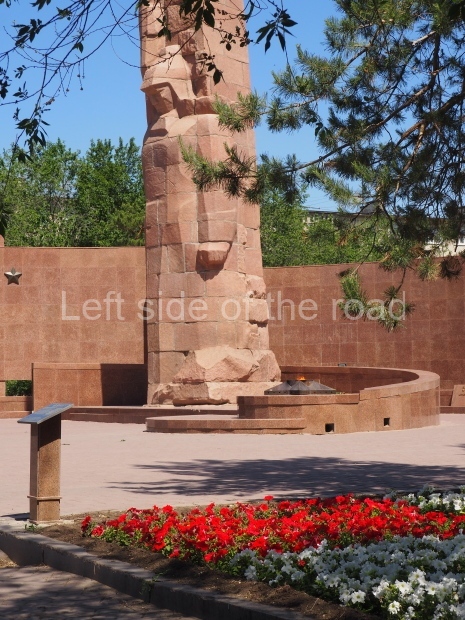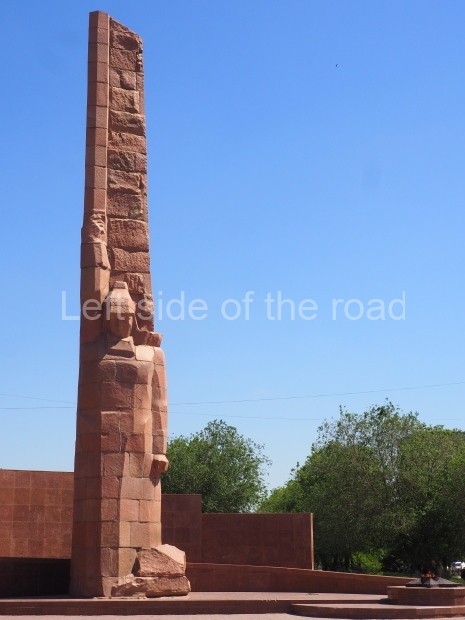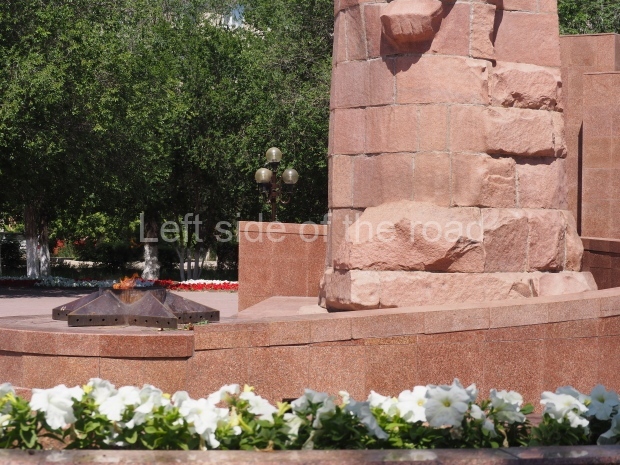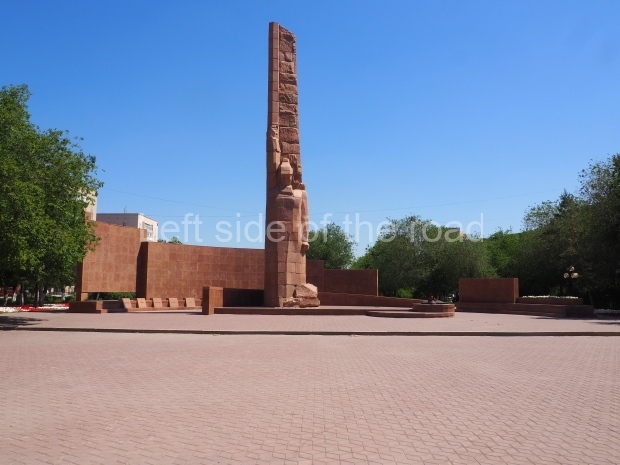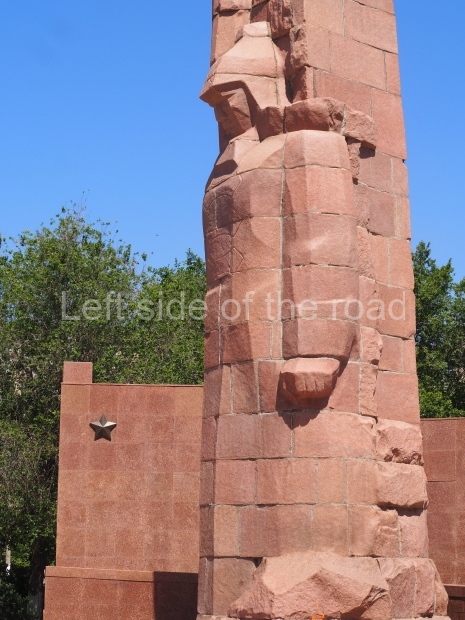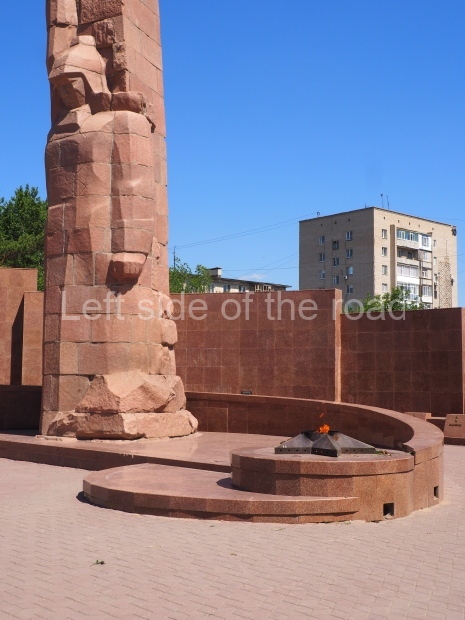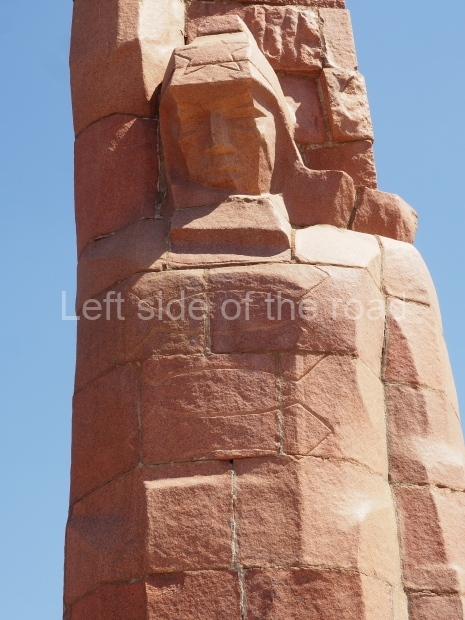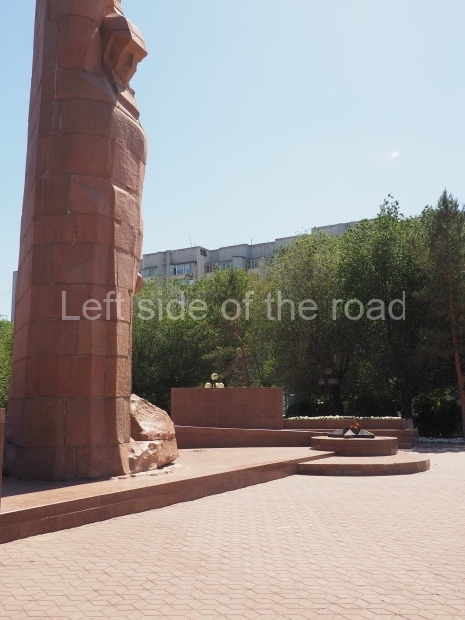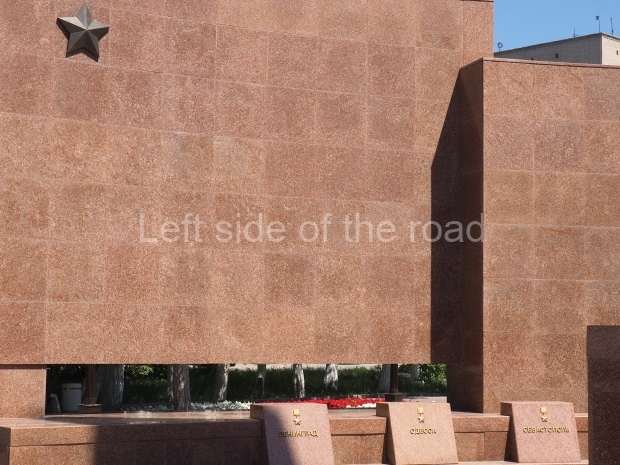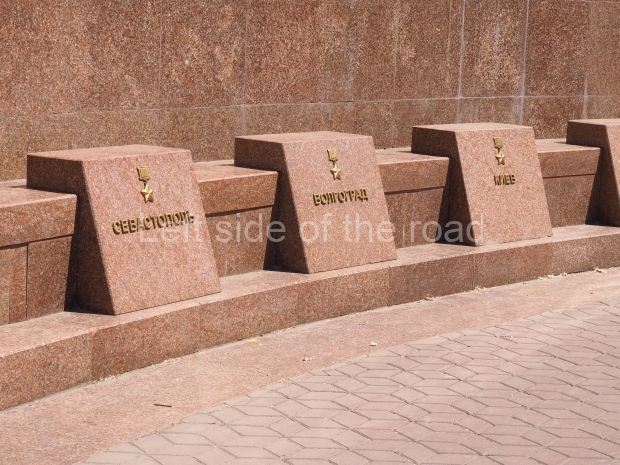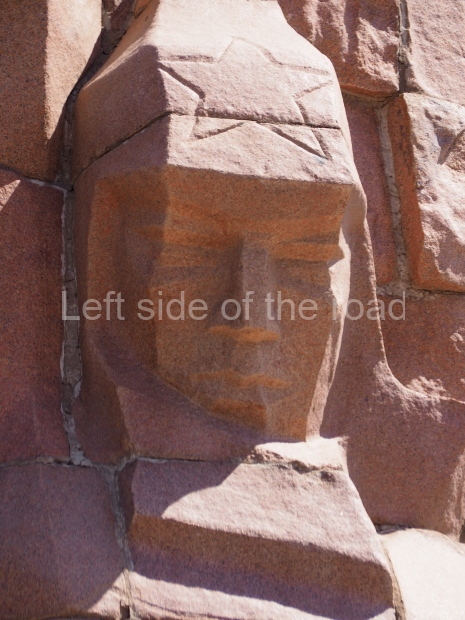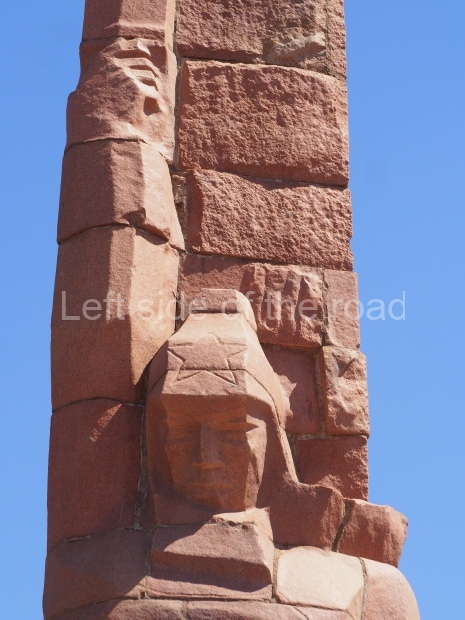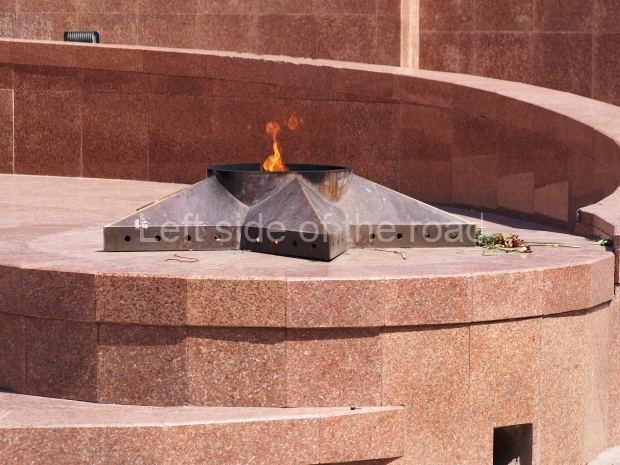Obelisk of Glory – Aktobe – Kazakhstan
Of all the post-Soviet countries in Western Asia Kazakhstan appears to be the one that still maintains a real connection to the Soviet past. This is reflected in the maintenance – and even existence – of those public statues and monuments that celebrated and commemorated Soviet achievements. Statues of VI Lenin might have been removed from certain locations but other monuments that remain are still treated with an element of respect. This respect reaches its peak, if you like, when it comes to commemoration of the Great Patriotic War.
One such monument is the Obelisk of Glory in Aktobe. This was inaugurated in August 1970 in honour of the people from the region who died for their homeland during the Great Patriotic War (what the ‘West’ calls the Second World War). The monument is now located in the central part of the new city of Aktobe on Aliya Moldagulova Avenue.
However, this is not its original location. It once stood in front of the House of the Soviets on Oktyabrsky Boulevard (now renamed Abai Avenue) but was moved to its present location in 1984 when a statue of VI Lenin (since removed) was erected on its site.
Major changes were made to the monument – not to the principal column but the surrounds – in its present location but I’m not exactly sure when. From the information I’ve been able to gather it was more likely in 2015 in preparation for the celebration of the 70th anniversary of the victory over fascism. Something like 160 tons of granite, from the Kurdai deposit in the Almaty region, were brought to Aktobe to construct the wall and the curbs in the area you can see now.
The principal element of the monument is a tall, 18 metre, obelisk into which is incorporated an image of a Red Armyman. He is depicted wearing an overcoat that was more appropriate to the Civil War/War Intervention in the immediate years following the October Revolution as many of important battles against foreign supported reaction took place in western Asia. On a monument that is ostensibly to commemorate the war of 1941 to 1945 the inclusion of an anachronistic element such as the overcoat could be to draw a parallel between the two conflicts – both of which were existential to the Soviet Union.
He wears a Budenovka hat with the clear outline of a star and his right hand is raised high above his head in which he holds a sword; his left hand is clenched into a fist. (This is very reminiscent of the soldier on the top of the pillar at the Monument to the Fallen of the NKVD in Stalingrad.) There’s an Eternal Flame burning to the right of the monument. This is unusual as in many locations, were there’s evidence of the presence of an Eternal Flame, the fire has long been allowed to go out. It is reported that the torch for the lighting of this flame came from the Field of Mars in Leningrad – I assume in 1970 when the monument was in its original location.
The architect was T. Dzhanibekov and the sculptor N. Sobolev. However, I’m not sure how much involvement either of them had in the remodelling that took place since its original inauguration.
The monument is the centre of commemorations annually on May 9th (Victory Day in the Soviet Union and has become more important in recent years in the Russian Federation) and, as in many locations in the post-Soviet Union where the fire still burns at an Eternal Flame, brides and bridegrooms visit the monument on their wedding day.
The modern monument to Aliya Moldagulova is along the same avenue, about a kilometre to the south west, and the museum in her honour is across the road, on the left, just before the memorial complex
Location;
Aliya Moldagulova Avenue/Eset Batyr Street
GPS;
50.293201 N
57.169999 E
DMS;
50°17’35” N
57°10’11” E




